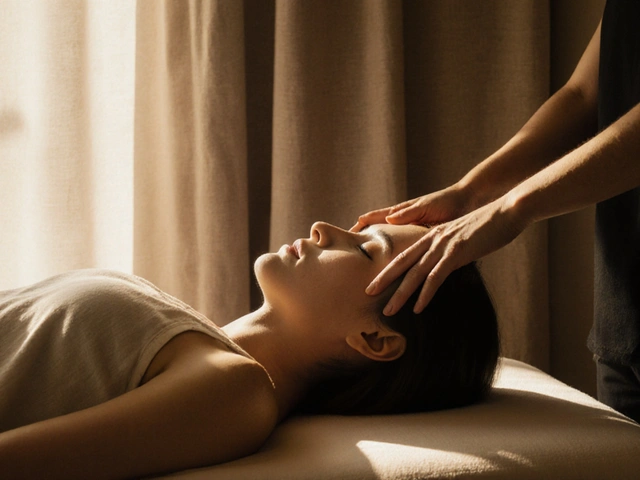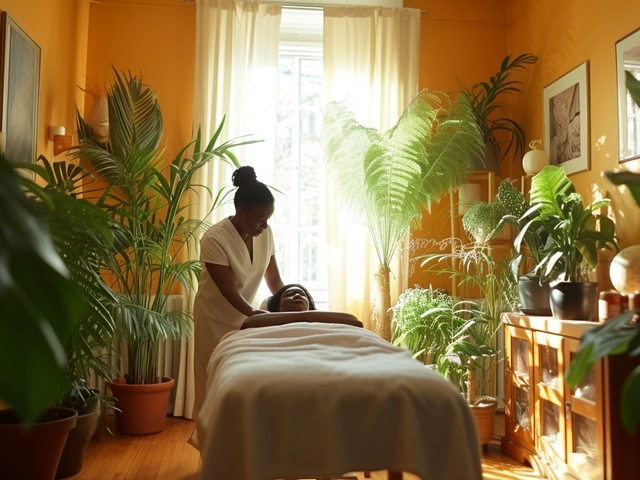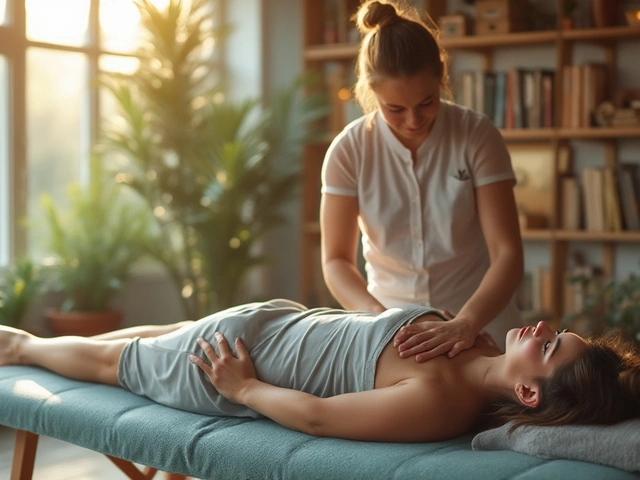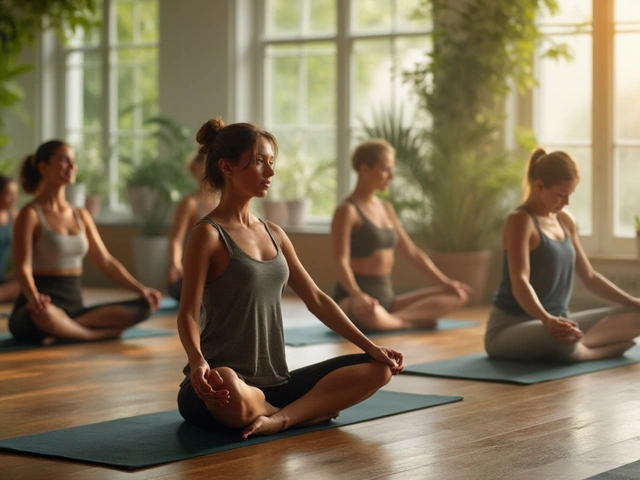Ortho-Bionomy Techniques for Sustainable Pain Relief: Your Guide to Natural Healing

Pain isn’t just about sore backs and stiff necks. Sometimes it’s relentless. Some people are barely holding it together, running from doctor to doctor, only to end up hugging a heating pad and popping ibuprofen like it’s candy. But what if the fix doesn’t come from stronger meds or another round with the foam roller? Ortho-Bionomy isn’t your average pain relief method—it’s a gentle, body-led approach that’s built for real-life bodies (including the ones that creak when you go upstairs). Instead of fighting pain with force, Ortho-Bionomy invites your body to relax, reset, and start healing from within. It sounds a bit mystical—like acupuncture’s laid-back cousin, minus the needles and the incense fog—but the results can be pretty remarkable.
What Is Ortho-Bionomy? Roots, Principles, and Myths
If Ortho-Bionomy doesn’t already roll off your tongue, you’re not alone. The name itself sounds like something dreamed up in a philosophy class, but the technique actually has roots in osteopathy. In the 1970s, British osteopath Dr. Arthur Lincoln Pauls developed Ortho-Bionomy as a way of helping people get out of pain without making them grit their teeth. He started with a simple idea: the body has its own wisdom, and if you encourage comfort rather than force change, the body often finds its way back to balance.
Unlike chiropractic care or deep-tissue massage, Ortho-Bionomy uses gentle positioning, subtle movements, and light touch. Instead of yanking on stiff muscles or cracking joints, the practitioner moves the body into a position of ease. No pain, no strain. Sometimes, you’ll find yourself thinking, “Is that it?”—but then you stand up, and your back feels looser, or your shoulder isn’t shouting at you anymore.
Ortho-Bionomy takes its cues from the body’s reflexes. For example, if a muscle feels threatened (overstretched, for instance), it tightens up to protect itself. When you encourage a position that feels safe, the nervous system gets the memo: “Okay, we can ease off.” The practitioner listens—literally—by feeling the responses through their hands and adjusting accordingly, like a dance partner who always follows your lead.
This might sound a bit “woo-woo,” but here’s a myth-buster: Ortho-Bionomy has practical applications and has been used by physical therapists, occupational therapists, and even nurses who want a gentler way to help chronic pain sufferers. A fact worth noting: a 2020 pilot study out of Switzerland (published in Complementary Therapies in Clinical Practice) followed adults with stubborn neck pain who had tried just about everything. After six sessions of Ortho-Bionomy, most participants had less pain and better movement—without any weird side effects. Not a miracle cure, but not snake oil either.
Here’s another fun fact: Ortho-Bionomy isn’t just for “crunchy” types or people who avoid the doctor. It’s creeping into mainstream wellness clinics, cherished by everyone from athletes with repetitive strain injuries to office workers with classic tech neck (I see you, hunched-over laptop people).
Inside a Typical Ortho-Bionomy Session
Walking into your first Ortho-Bionomy session, you might expect the classic massage table and relaxing spa music. You’d be half right—there’s usually a table, but most sessions happen fully clothed. No oil, no deep kneading. The vibe is very much, "Let’s listen to your body," not "Brace yourself, this might hurt." It’s gentle, yes, but not aimless.
The session begins with a conversation. The practitioner asks about your pain, your movements, and any patterns you’ve noticed: “Does it hurt in the morning? After a run? When you haul groceries?” The idea isn’t just to treat symptoms, but to map out how your whole body moves—the connections you don’t always notice.
From here, the Ortho-Bionomy magic starts. The practitioner supports different parts of your body—maybe your arm, neck, or lower back—and helps you find a position where there’s no pain or tension. Then, you hold that position for 30 to 90 seconds. Some people feel their muscles subtly release, others just breathe easier. The idea is that you give your nervous system a new, healthy pattern to remember.
| Common Ortho-Bionomy Benefits | Description |
|---|---|
| Pain Reduction | Less muscle guarding, easier movement |
| Increased Range of Motion | Joints move more freely, especially after positional release |
| Better Posture | Subtle realignment and body awareness |
| Stress Reduction | Gentle techniques calm the nervous system |
| Improved Sleep | Pain and stress relief lead to deeper rest |
Henrietta, my wife, was skeptical at first—she wondered how “doing almost nothing” could possibly tackle her shoulder pain. After a few sessions, though, she started noticing she didn’t wince in the morning and could actually lift the kettle with her right arm again. “It’s like coaxing my body rather than battling it,” she said. It’s a slow, subtle kind of progress, but it often sticks around longer than the temporary relief of a back-crack or ice pack.
Here are some tips if you’re curious about trying a session:
- Wear comfy clothes—you’ll stay dressed the whole time, and movement is gentle, but freedom helps.
- Bring notes about your pain. When does it flare up? What helps? The more detail, the better.
- Ask your practitioner which techniques they use. Some blend classic Ortho-Bionomy with other methods like craniosacral therapy or myofascial release.
- If you’re prone to “nodding off,” don’t worry. Light relaxation is a common effect.
- Drink water after your session. It helps flush out muscular tension changes.

How Does Ortho-Bionomy Actually Work?
The technical side: Ortho-Bionomy is rooted in the body’s proprioceptive reflexes—those unconscious signals that tell your muscles and joints where they are in space. That’s why when you sprain your ankle, you instinctively limp or hold it at a certain angle. Normally, we ignore how the body compensates for discomfort, but Ortho-Bionomy uses those instincts as a roadmap. When your body finds a position that feels safe or easeful, tense muscles and connective tissue can begin to let go.
There’s a brain-body loop at play here, too. Pain is more than just mechanical issues—it can be tied up with your nervous system, your mood, or even the way you breathe. Ortho-Bionomy practitioners often include gentle compression, rocking, or traction—not to “move” bones but to offer the nervous system new sensory input. It’s a reset button for tension. Studies have found that even mild positional release work can lower muscle tone and make movement feel lighter, especially for folks managing persistent pain or trauma.
Let’s bust another myth: Ortho-Bionomy isn’t “energy healing” or wishful thinking. It’s hands-on, quite methodical, and usually explained in plain English. If you’re curious, practitioners will walk you through exactly what they’re doing (“I’m cradling your hip like this to give your lower back a chance to relax”). There’s nothing hidden or mysterious—just a strong respect for letting the body do what it already knows how to do.
Here’s an example. Imagine someone with frozen shoulder. Instead of forcing range of motion with aggressive stretches, which usually hurts and causes more guarding, the Ortho-Bionomy approach is to support the arm in a position that feels best. Maybe there’s a subtle rotation, a gentle lift, and then nothing—just waiting. Within sixty seconds, the protective spasm may drop a notch or two. Small, consistent changes can add up.
Research is starting to catch up with what practitioners see every day. Though large-scale studies are rare, small clinical trials suggest Ortho-Bionomy can help with headaches, sciatica, whiplash, and even the nagging aches of fibromyalgia. A lot of these studies finish with comments like, “safe, well-tolerated, and appreciated by participants.”
- Long-lasting effects. Unlike some therapies that give fleeting relief, Ortho-Bionomy often helps retrain everyday posture habits.
- Customizable for everyone. Athletes, desk workers, kids, elderly people—even people recovering from surgery can often benefit.
- Supports mental wellness. The gentle, mindful nature of sessions can calm anxiety and help people reconnect with their bodies.
Of course, it’s not a cure-all. If you break a bone, you need an X-ray—not a gentle hold. But, for chronic pain and tension that don’t have an obvious fix, this approach can open up new possibilities.
How to Incorporate Ortho-Bionomy Practices in Daily Life
Here’s where things get practical. Ortho-Bionomy isn’t only something you do on a table with a practitioner hovering nearby. At its core, it’s about learning to listen to your body, follow what feels good, and ditch that “no pain, no gain” attitude. You can bring some of its principles right into your daily routine—no appointment required.
Let’s say you get neck pain at your desk after a long morning of Zoom calls. Instead of forcing a stretch or cracking your neck, try this mini Ortho-Bionomy move: slowly move your head in different directions until you find the position where the pain eases up—even a little. Stay there, breathe for 30 to 60 seconds, then return to neutral. Sometimes, that’s enough for your brain and nerves to recalibrate and switch off the tension. Repeat on the other side if needed. You might look a bit odd for a minute, but who cares? Your neck will thank you.
Other practical tips inspired by Ortho-Bionomy:
- Start your day with a body scan. Notice which areas feel tight, and see if a gentle shift in position brings relief—no need to force a stretch.
- Try “comfort first” alignment. When sitting, standing, or walking, experiment with finding the most comfortable posture instead of “perfect” posture. Sometimes your body knows better than your mind.
- Add micro-breaks. Every hour, take sixty seconds to notice one stiff area, and adjust your position until the discomfort eases a bit. This helps reset unconscious tension patterns.
- Introduce mindful movement during exercise. Focus on quality of movement and how each joint feels, instead of pushing limits every session.
- If you get headaches from eye strain, cup your hands gently around your head and let the muscles rest against your palms for a minute—this subtle support is very Ortho-Bionomy.
There’s something pretty empowering about realizing you don’t have to “battle” your body. Ortho-Bionomy’s secret is that pain relief can be sustainable—no heroics required, just patience and self-kindness. Sure, it may not replace your trip to the doctor, but it makes for a solid partner if you’re fed up with pain dictating your days. And isn’t that what we’re all after? More good days than bad. A nervous system that isn’t running on high alert. Waking up and realizing that, yes, you really do feel better.





